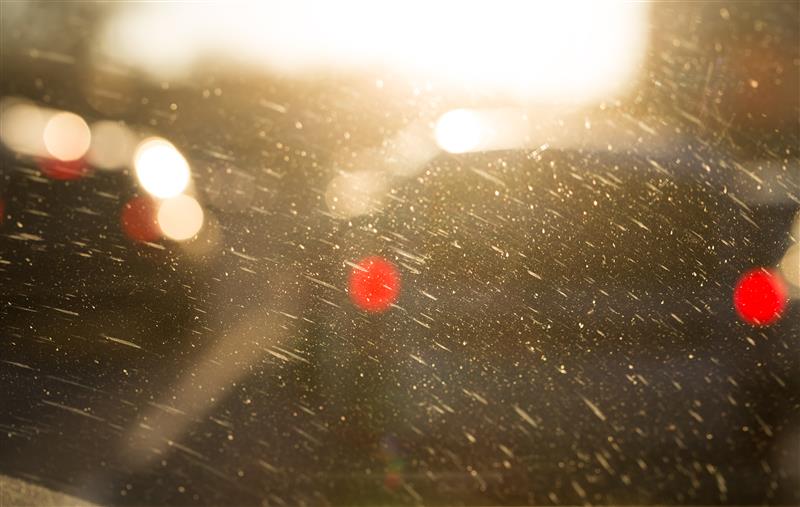
There’s something deeply satisfying about seeing your reflection in a crystal-clear mirror or gazing through a spotless window. But too often, the result falls short. Streaks, lint, or cloudy residue can ruin the finish. Whether you’re cleaning your bathroom mirror, kitchen window, or car windshield, glass can be frustratingly hard to get right.
So why is it so challenging to achieve that streak-free shine? And more importantly, how can you clean glass without leaving lint or residue behind? Let’s take a closer look.
Common Mistakes That Leave Lint and Residue on Glass
At first glance, cleaning glass seems simple: spray, wipe, and you’re done. However, several common missteps often lead to frustrating results. One of the biggest problems is using the wrong cloth. Paper towels and old T-shirts may seem convenient, but they shed fibers or push dirt around instead of lifting it. The result is often a surface littered with lint or faint smears that only appear when the light hits just right.
The cleaning solution can also be part of the problem. Some products are too soapy or evaporate slowly, leaving a hazy residue. Homemade mixes with vinegar or dish soap might work in a pinch, but they aren’t always consistent, especially on large windows or car glass. Oversaturating the surface or using a dirty cloth can worsen matters by spreading grime rather than removing it.
If your glass never looks truly clean, the issue isn’t how hard you’re trying. It’s likely the tools and techniques you’re using. The good news is that a few easy changes can lead to a consistently clear finish.
How to Clean Glass Without Leaving Lint or Residue
Getting glass truly clean comes down to three essentials: using the right tools, following the right technique, and working with a cleaner that doesn’t leave anything behind. Follow this step-by-step approach for a consistently clear, streak-free finish.
Use a Lint-Free Microfiber Cloth
Choose a clean, dry microfiber cloth designed specifically for glass or windows. These cloths are made with ultrafine synthetic fibers that trap dust, lift grease, and hold onto particles instead of spreading them. Unlike paper towels or cotton rags, microfiber won’t leave lint behind. It’s also highly absorbent, which helps reduce streaks as you wipe.
To keep microfiber performing at its best, avoid fabric softener when washing. Softener coats the fibers and reduces their effectiveness. Wash microfiber separately from cotton items, and either air dry or tumble dry on low heat to preserve its cleaning power.
Choose a Streak-Free Glass Cleaner
Skip the all-purpose sprays and complicated DIY mixes when choosing a cleaning solution. Popular options like vinegar and water may sometimes work, but they often leave a sour smell and inconsistent results, especially on tinted or heavily smudged glass.
Choose a dedicated glass cleaner like Invisible Glass for a more reliable clean. Its ammonia-free formula is safe for tinted windows and dries quickly without leaving behind cloudy residue. Using a product designed specifically for glass removes the guesswork and helps you achieve better results with less effort.
Spray Lightly to Prevent Streaks
One of the most common mistakes is using too much product. A heavy spray might seem thorough, but it creates excess moisture that’s harder to wipe away. The result is often streaks or haze that appear once the glass dries.
Instead, lightly mist the surface. Work in sections for larger areas like windows or windshields to stay in control. Using a light touch allows your microfiber cloth to absorb the cleaner more effectively, making it easier to polish the surface to a clear, streak-free finish.
Use a Two-Pass Wiping Method for a Streak-Free Finish
After lightly misting the glass, wipe the surface with a microfiber cloth using gentle circular motions to lift dirt, oils, and fingerprints. Then, flip the fabric to a dry side—or switch to a second clean microfiber towel—and go over the area again using straight, consistent strokes. Vertical or horizontal lines work best for a polished finish.
The two-pass method removes debris on the first wipe and finishes the job with the second. A dry cloth helps eliminate moisture, streaks, or lint, leaving the glass spotless.
Check Your Work from Multiple Angles
Smears and lint often hide until the light hits the surface just right. Step back and inspect the glass from different angles, especially in natural light. Shifting your viewpoint makes it easier to spot missed areas needing one final pass with a dry cloth.
Glass Cleaning Tips for Mirrors, Car Windows, Shower Doors, and More
Different types of glass benefit from slightly different cleaning methods. Adapting your approach based on the surface can make all the difference in avoiding lint, residue, and damage.
| Glass Type | Tips for Best Results |
|---|---|
| Mirrors |
● Spray the cloth, not the mirror, to prevent liquid from seeping behind the edges. ● Use the two-pass microfiber method for a streak-free finish. |
| Car Windows & Windshields |
● Roll windows down to clean the top edge. ● Clean both inside and outside. ● Use a tint-safe, ammonia-free cleaner like Invisible Glass for best results. |
| Shower Doors |
● Start with a vinegar-based pre-clean to remove mineral buildup. ● Follow up with your standard cleaner and microfiber cloth to eliminate streaks and lint. |
| High Windows & Large Panes |
● Use a microfiber cloth to loosen dirt, then finish with a top-to-bottom pass using a squeegee. ● Wipe the blade between strokes to prevent drips and haze. |
Maintain Your Glass Cleaning Tools
Proper technique and products won’t matter much if your tools aren’t clean. Over time, microfiber towels can collect lint, oils, and residue that reduce their effectiveness. To keep them in top shape, wash regularly with mild detergent, skip the fabric softener, and avoid mixing them with cotton items that shed fibers. Always store clean towels in a dust-free place to prevent contamination before the next use.
Make Streak-Free Glass Part of Your Routine
Avoiding lint and residue takes a few simple habits: use a clean microfiber cloth, reach for a quality cleaner like Invisible Glass, apply the proper technique, and don’t rush the process. Skip the paper towels, mist lightly, and polish with care.
Put it all together, and you’ll get a flawless, streak-free finish that holds up to any light, every time.



